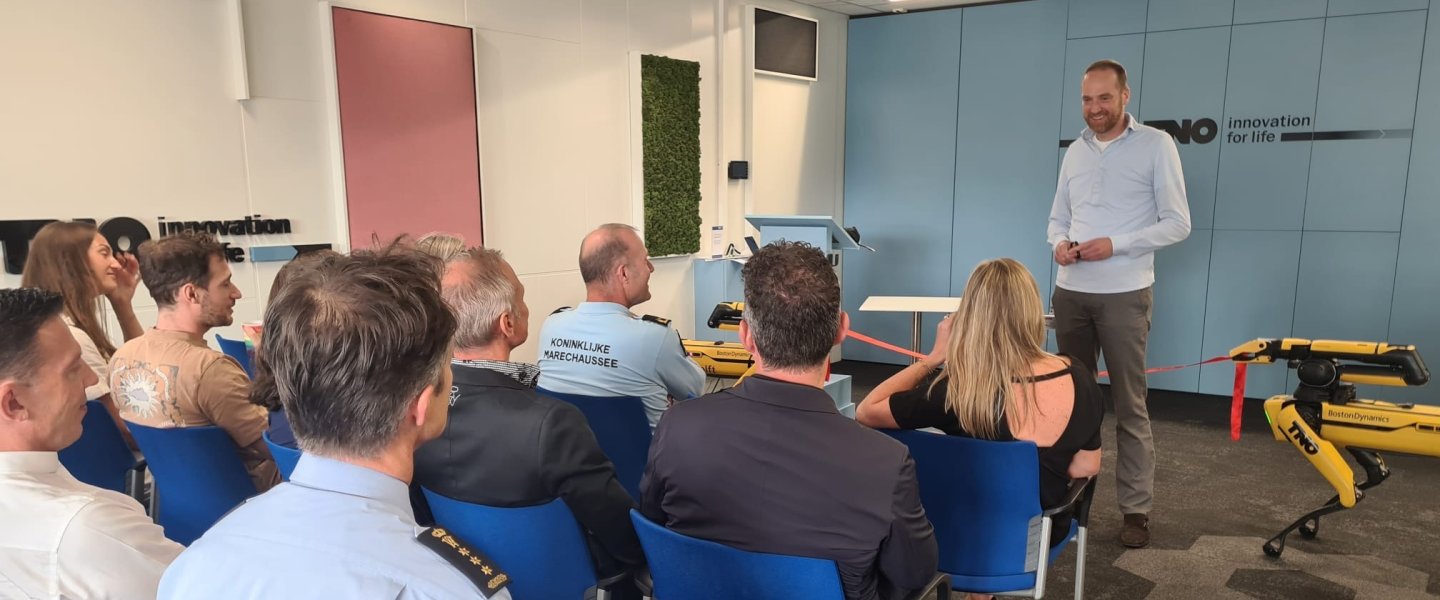
Advanced AI for surveillance robots
University of Amsterdam, TU Delft, TNO and the Royal Netherlands Marechaussee are joining forces to develop AI for surveillance robots. The OpenBots consortium focuses on creating intelligent systems that can support security staff in their daily tasks.
The project uses the latest developments in generative AI, similar to the technology behind ChatGPT. Such a ‘language model’ enables computers to produce human-like texts and answer complex questions. The challenge lies in developing and applying this technology in the unpredictable public space, in which surveillance robots will operate.
Surveillance along fencelines
‘Robots can already move independently, but we still need to teach them to assess situations and react appropriately,’ explains Dr Joris Sijs, project leader from TU Delft. ‘We focus on scenarios where robots walk surveillance rounds along fences, where they have to recognise objects and people and assess what action is needed.’
Better than a human?
The use of robots in the surveillance sector offers several advantages. They can operate 24/7, are able to perceive small details that humans may overlook, and can assess dangerous situations without human risk. Moreover, they can provide a solution to the expected staff shortage in this field.
Human-robot collaboration
However, the aim is not to replace human security guards, but to support them. ‘We see a future where humans and robots work closely together,’ said a spokesperson for the Royal Netherlands Marechaussee. ‘Robots can take over routine tasks, allowing human security guards to concentrate on more complex situations that require human insight.’